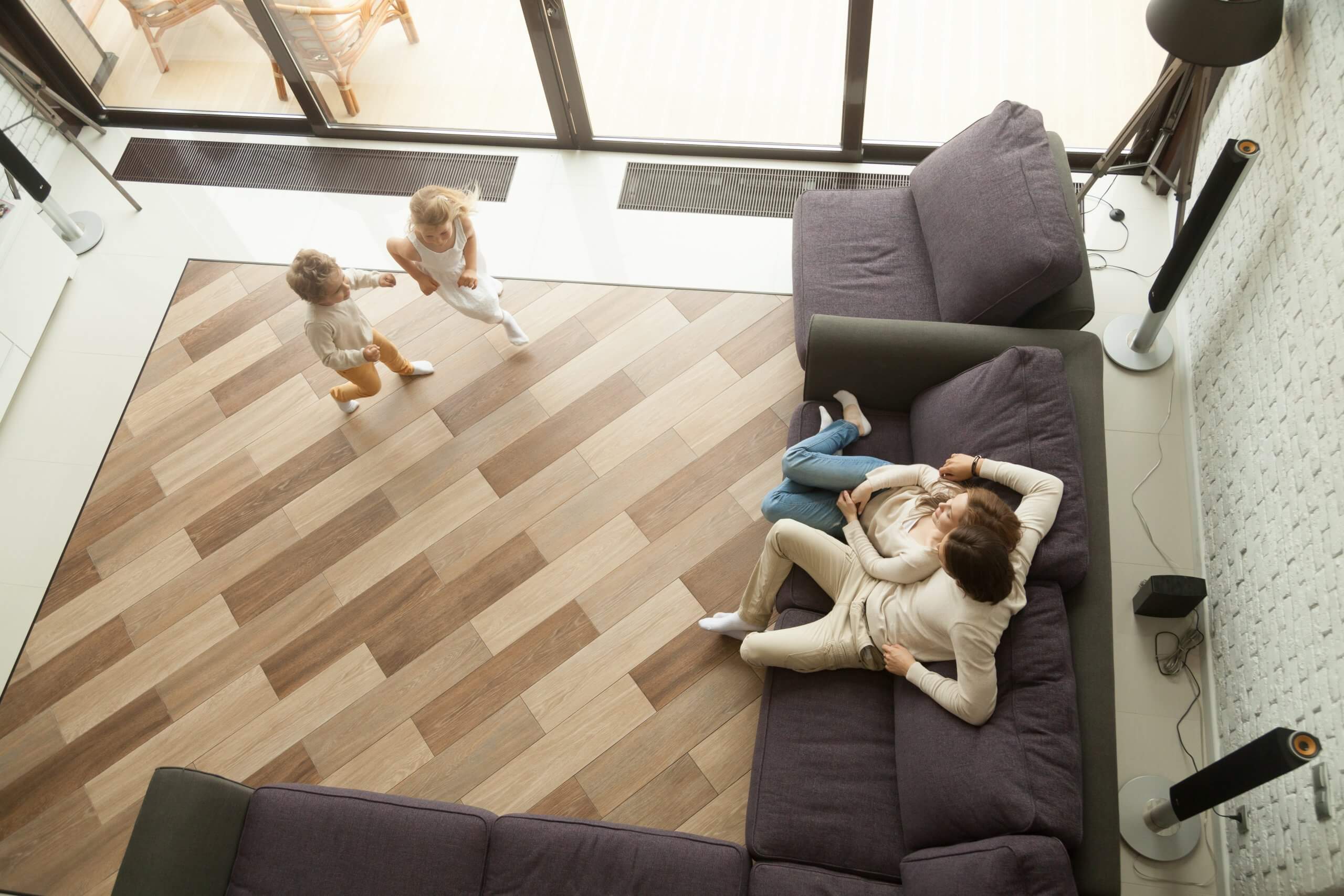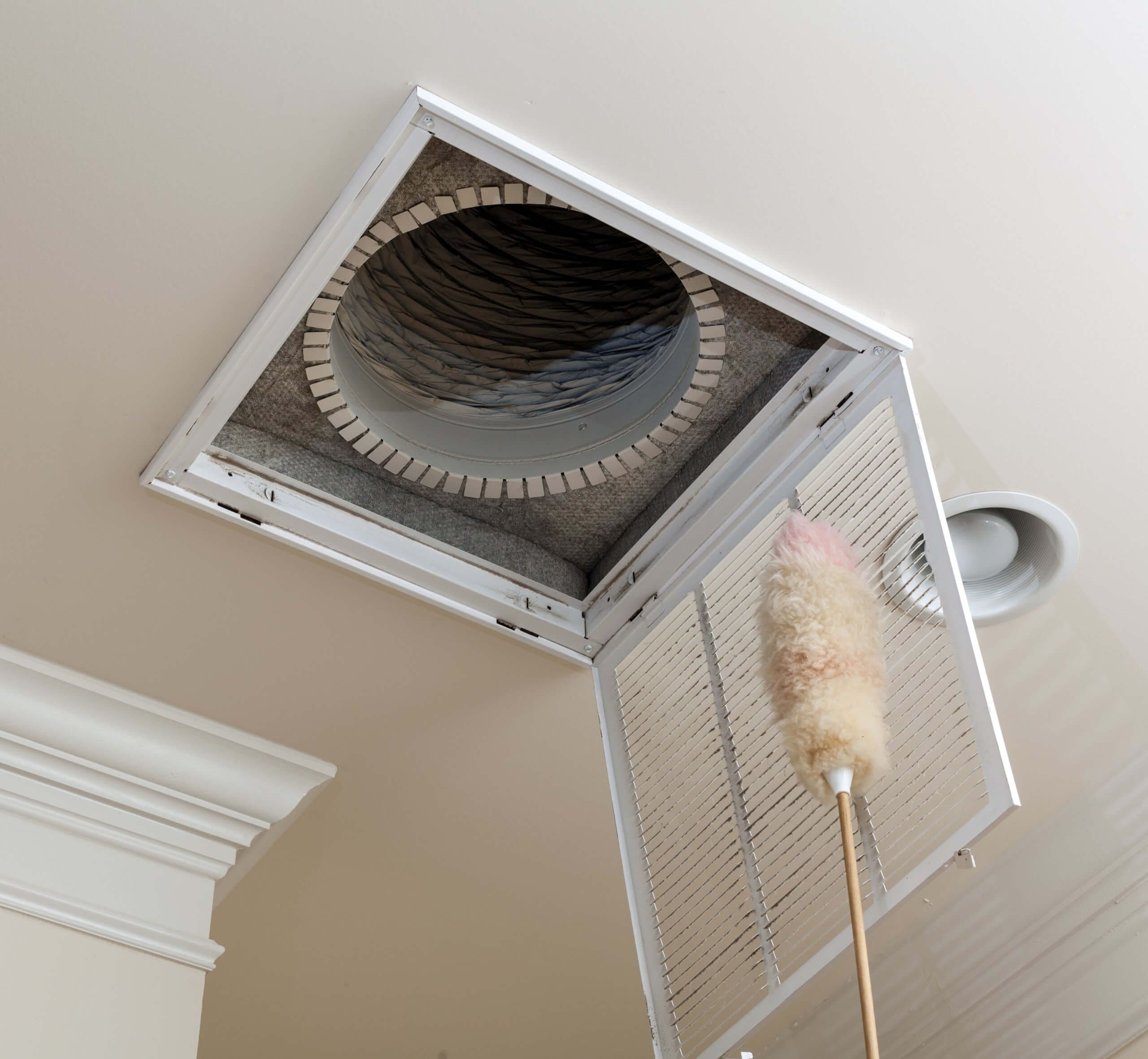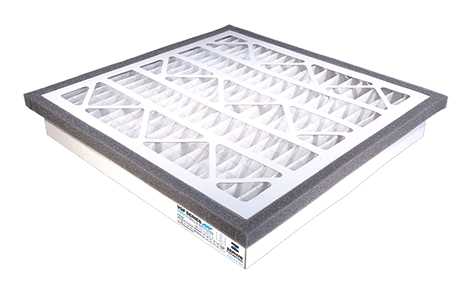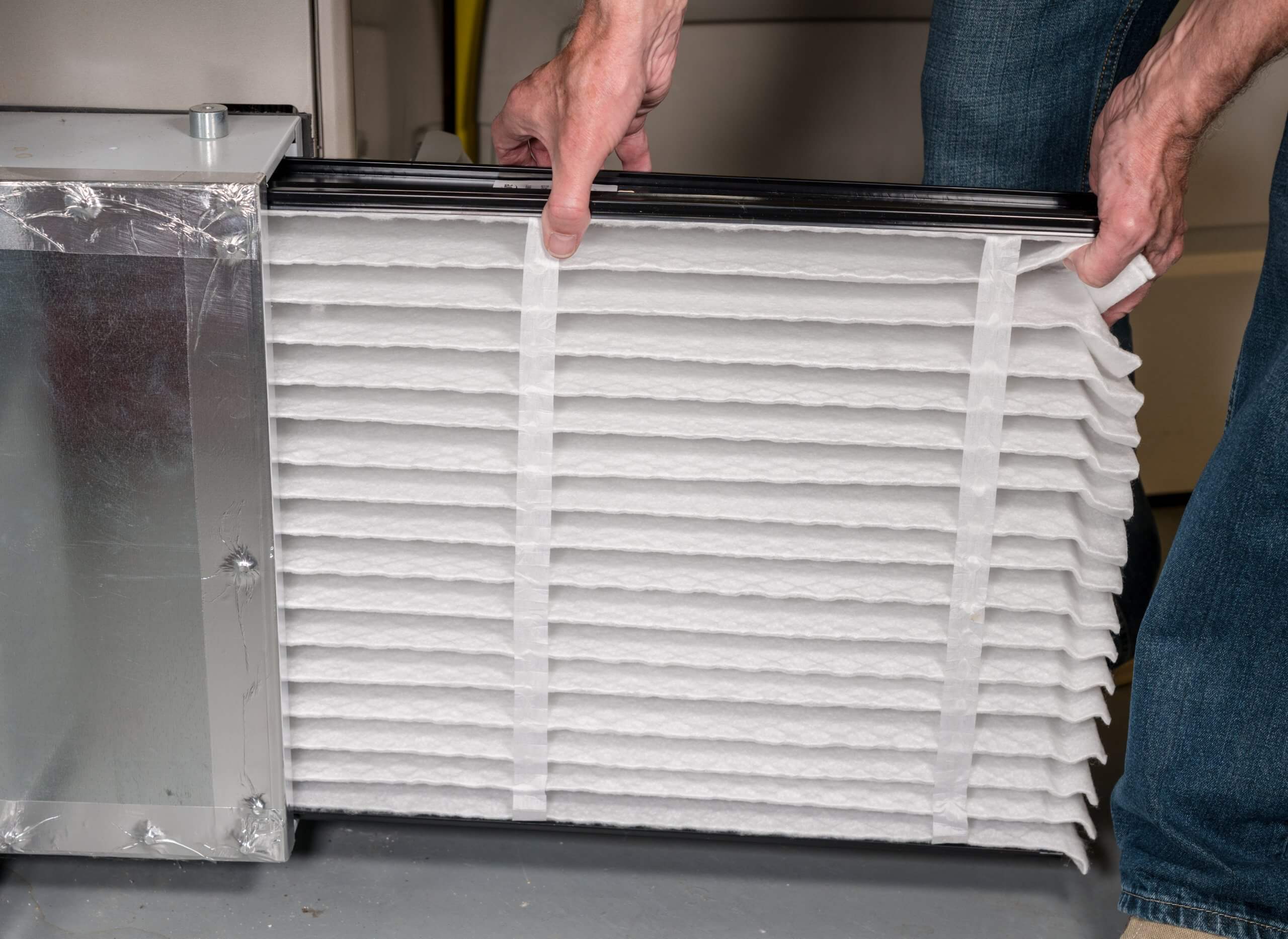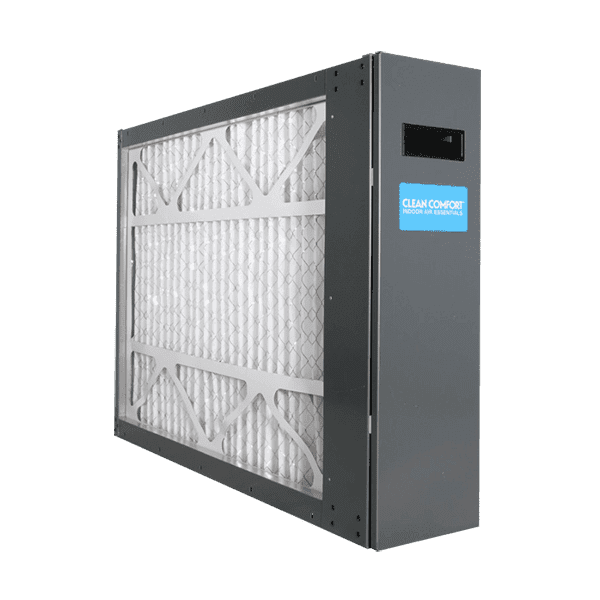Filtration is one of, if not, the most important indoor air quality components. Likewise, filtration is absolutely essential for the success of your home HVAC system. The best whole-home air filter both protects the HVAC system and improves its performance while reducing indoor pollutants and providing a healthier indoor environment for you and your family.
In order to choose the best air filter, it’s helpful to understand all the options, filter differences and decide which factors are most important to you. This is our in-depth guide to whole-home air filter types.
Where Are Air Filters in Your Home?
Air filters are incredibly important not only for the daily operation, protection and lifespan of your home HVAC system but for improved indoor air quality. In other words, the right air filter will result in better system performance, reduced utility costs and protect the health of occupants in your home.
Air filtration is one of the five main IAQ control strategies. Some refer to filtration as an air cleaning process, and while technically true as filters do remove pollutants from indoor air, what is and isn’t an air cleaner can get quite confusing. For this article, we’re focusing on the different types of whole-home mechanical air filters that are installed into the return duct line of a central or forced air home system.
Depending on your home’s specific system design, the filter is likely found in one of two places:
- Return Air Grille Filter: Filters are placed in a designated return air grille somewhere in the home, either in the ceiling or possibly on a wall.
- Return Air Side of the Air Handler Unit: In these systems, the filter is placed in the designated slot directly attached to the HVAC air handling unit. (An air handling unit AKA air blower or often simply the home furnace.) This can be below, above or on the side of the air handling unit depending on where the return duct is attached to the air handler and if it’s installed vertically or horizontally.
Number of Air Filters
How many filters are in your home depends on the size of your house. There is generally one air filter for each HVAC system. So, for larger two-story homes with an upstairs and downstairs HVAC system, that means two air filters. If your home has a whole-home mechanical ventilation system or another type of indoor air quality upgrade, the add-on solution might require its own filter. IAQ system upgrades are really the only reason your home’s system would have additional air filters.
Also important to note: there is no difference in design or location between an HVAC filter, furnace filter and AC filter. All are common names for air filters that simply differ across regions of the United States. Whatever term you’re familiar with—the priority is choosing the best filtration level for your space.
Understanding HVAC Filter Differences
There are a few key filter traits or categories that differentiate the types of whole home air filters. This includes efficiency and rating, material type, filter design and thickness. Regardless, every whole home filter is absolutely critical to your home’s air quality and HVAC system operation.
Wait, But What About …
UV light cleaners and air purifiers? This is the other side of air cleaning—and an important distinction.
Mechanical air filters are physical barriers that capture and remove, thus filter out contaminants and particles from indoor air. This differs from purification processes and similar alternatives that instead use an electric charge to attract contaminants or UV light to sanitize specific system components. These are add-on solutions and cannot serve as a replacement for air filters.
 Air Cleaning: Air cleaners, air filters, air purifiers … oh my! There are a lot of ways to clean indoor air by targeting and removing indoor air pollutants. We break down the three common terms and their differences. Read more —>
Air Cleaning: Air cleaners, air filters, air purifiers … oh my! There are a lot of ways to clean indoor air by targeting and removing indoor air pollutants. We break down the three common terms and their differences. Read more —>Filter Efficiency & Ratings
Efficiency is a filter’s ability to capture, withhold and remove particles from the air. Efficiency ratings are based on the filter’s ability to filter out contaminants and prevent pollutants from circulating indoors.
The most common rating system is the minimum efficiency reporting values scale, AKA MERV ratings. MERV ratings range from MERV 1-20. Grades are given based on a filter’s average removal efficiency across three particle size ranges: 0.3-1 microns, 1-3 microns and 3-10 microns.
As a helpful rule of thumb: MERV 1-4 are low-efficiency filters, MERV 5-12 are medium-efficiency filters, MERV 13-16 are high-efficiency filters. MERV 17-20 reaches HEPA level filtration.
 Filtration: Our guide to all things MERV, and why your home would benefit from a high-efficiency air filter can be found here —>
Filtration: Our guide to all things MERV, and why your home would benefit from a high-efficiency air filter can be found here —>In addition to the MERV scale, micro particle performance rating (MPR) and filter performance rating (FPR) are two other popular filter rating systems. Generally, whichever rating system, the higher the rating = the higher the filter’s removal efficiency.
Whole Home Air Filter Types
Why does filter type even matter? Shouldn’t you choose solely based on the best rating? While the rating is significant, it’s not the entire story. Air filter type and material affect maintenance, how often to change the filter, cost, and ultimately which option works best for you. Let’s break down the different types of whole-home air filters.
Flat / Panel Filters
Flat or panel air filters are incredibly common residential system filters. Think of this filter as the basic go-to home air filter. These filters are low-efficiency with a MERV rating between one and four. Their purpose, first and foremost, is to protect the system itself from dust and debris. These filters capture less than 20% of particles in the largest 3-10 microns size range and do little to improve air quality.
While inexpensive, you must change these filters often. You should check flat filters at a minimum of every 30 days. Popular materials are fiberglass or mesh spun-glass.
Washable Filters
The main benefit of washable filters? They’re environmentally friendly. With a thread-like mesh, these filters are reusable. Similar to flat filters, washable filters have low MERV ratings, somewhere around MERV 1-3 and need to be checked and cleaned regularly. These filters can last for years, but require routine and proper maintenance.
Also important to note, washable filters must fully dry to avoid mold and mildew or any sort of biological growth. For this reason, washable filters are not for homeowners looking for a simple option.
Electrostatic Filters
Electrostatic filters quite literally create static electricity that attracts dust and particles. These filters usually comprise small cotton and paper fibers. They are available in disposable and reusable forms. While not all washable filters are electrostatically charged, a majority of electrostatic filters are also washable filters.
Pleated Filters
Pleated filters refer more to the filter design rather than material type. Filters in this category vary considerably in MERV ratings, ranging all the way from MERV 5 to MERV 13. This is because pleated is just one part of the equation and a pleated filter’s rating still depends on the material and thickness. Common materials include polyester fabric blends and cotton.
Pleated simply means the fabric is folded multiple times. This gives the filter an accordion-like appearance. Pleated filters are superior to non-pleated as it drastically increases a filter’s surface area; meaning, it can capture more contaminants and requires fewer changes.
Electronic Filters
First and foremost, electronic air filters differ from electrostatic filters due to the nature of the charge. Electronic air filters use a high-voltage electric charge created by a transformer. Translation: you quite literally plug in these mechanical air filters. They need a power source to work. That also means that electronic filters won’t work in homes with return grille air filters.
Electronic air filters are pricier up-front but are replaced roughly once a year. These filters often fall somewhere between MERV 8 and MERV 16 ratings. Similar to whole-home purification systems, it’s important to choose an electronic filter that offers third-party testing data as they use similar ionizer processes. In addition, always avoid purposeful or marketed ozone generators.
Gas-Phase Filters
This family of air filters specifically targets odors, volatile organic compounds (VOCs) and other gaseous pollutants. The process known as gas sorption utilizes a sorbent to absorb said gaseous pollutants from the air. This includes activated carbon and charcoal air filters.
Gas-phase filters are not a common home system choice—at least not as the primary whole home filter. Not only do these filters have a short lifespan, fill quickly and require frequent replacements, but they only target gaseous pollutants. Thus leaving your home vulnerable to all sorts of particulate matter and air contaminants. More often than not, gas sorption solutions or gas-phase filters are better as an additional filter option.
Media & Extended Media Filters
Media air filters consistently offer homeowners the best filtration option. They are designed with improved indoor air quality in mind. These filters have no negative airflow or static pressure consequences. Regularly utilizing a pleated design, they offer a greater surface area to trap and remove pollutants from indoor air. Media filters are medium or high-efficiency whole-home air filters with ratings between MERV 8 and MERV 16.
A Note About HEPA: MERV 14-16 can be misidentified as HEPA filters, but true HEPA is the 17-20 range. HEPA filtration is widely regarded as unnecessary for the average home. It cannot really work as a whole home air filter without professional modification as most systems cannot accommodate such drastic airflow resistance. Instead, it is more often seen in portable purification devices or designated spaces designed with HEPA filters in mind.
Consisting of a paper-like material, media filters are a huge step up from standard flat filters. You also change them less frequently, often only a couple of times a year, pending special circumstances. Media and extended media filters are also much thicker, usually, 3-5 inches compared to a standard 1-inch air filter.
Extended media filters are housed in a metal cabinet near the air handling unit rather than a return grille. This location allows for the thickest filter solutions. And while home return grille slots are designed for average 1-inch filters, certain companies have found ways to bypass this issue. There are always options available! Don’t assume your home system is incapable before consulting with a contractor or technician.
The main drawback to media filters? It can be difficult to determine the highest MERV rating your home HVAC system can handle. For the average home system, we recommend not to go above MERV 13. But the lowest MERV rating to aim for in a media filter is around MERV 10 or 11. Again, an experienced HVAC contractor with IAQ expertise can easily help determine the best option for your space.
Choosing The Best Type of HVAC Filter for Your Home
So, in an ideal world, you’d choose a pleated design media filter that’s at least 3 inches thick offering the greatest surface area coverage and a high-efficiency MERV rating as well as long-term cost savings. Here are the top factors to consider to choose the best HVAC filter type for your space!
1. Airflow
Airflow is the top consideration. When upgrading to a higher-efficiency whole-home air filter, your home’s HVAC system has to handle the increased airflow resistance. There is really no great way to determine your system’s capacity on your own other than trial and error. That’s why hiring an HVAC contractor is generally the recommended move.
2. Maintenance
The best filter for you is the one that provides the best air quality—and maintenance must be part of that consideration. If you’re drawn to the cheapest filter, but not willing to change it monthly, then it’s not the best choice. If you’re willing to wash a filter every few months and check it regularly in the name of being eco-conscious, then go for it!
You must be honest about your commitment level to filter maintenance and recognize that every filter requires routine changes. For most homeowners, the desire for as little effort as possible is another “pro” for media filters.
3. System Habits
A point that’s often overlooked: whole-home air filters in central HVAC systems are only filtering when the air system is on. This is true whether using air conditioning, heat or simply the system fan. But, it’s necessary to remember that the system has to be on in some way for air filtration. By all means, you can always switch the fan setting from auto to on for extra filtering.
4. Fit
The final tip is to remember that filter size and the fit is crucial. Every whole-home air filter should be sized correctly and fit snuggly with little to no air escaping out the sides. Never compromise on this!
Choosing Improved Home Filtration
Prioritizing health, home quality and improved indoor air means choosing a filter that also prioritizes those goals. You want a filter that can capture the smallest air pollutants and particles! After all, it’s the smaller-sized particles that present greater health risks. Making the switch from a basic flat filter to a high-efficiency pleated media filter is one of the easiest IAQ home upgrades.
